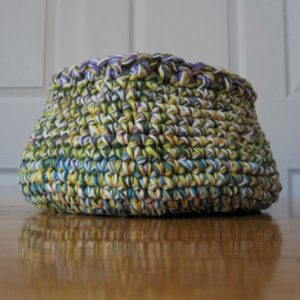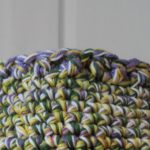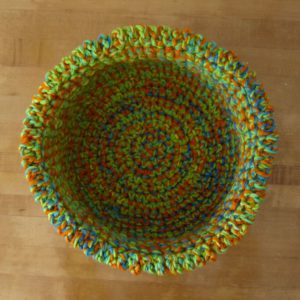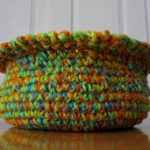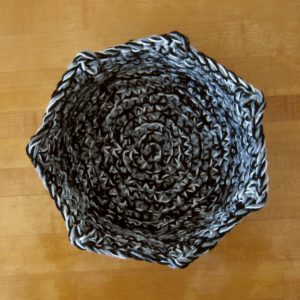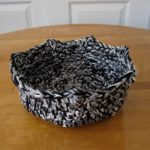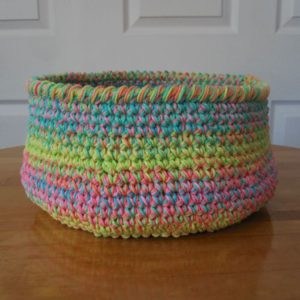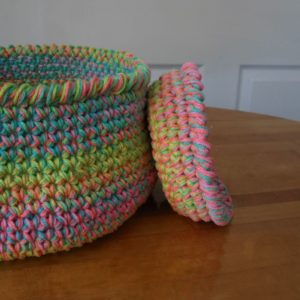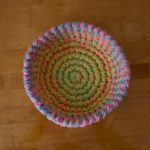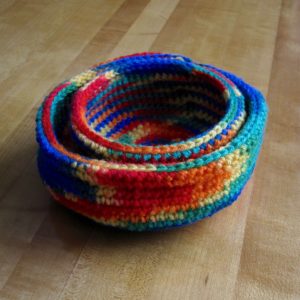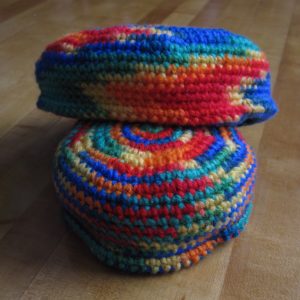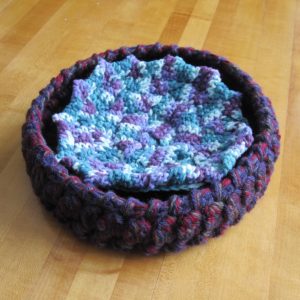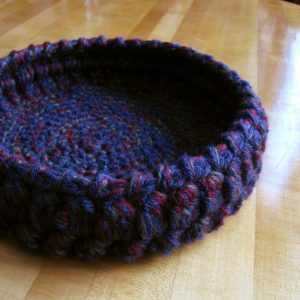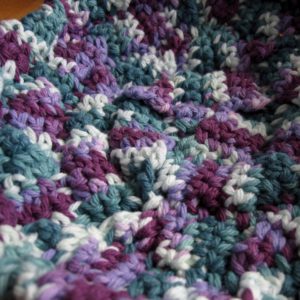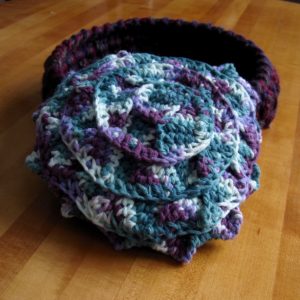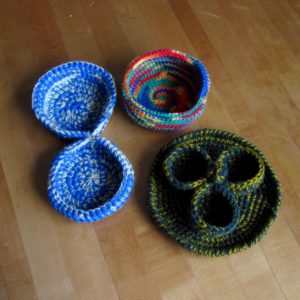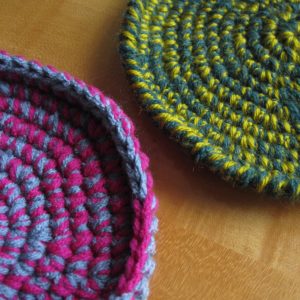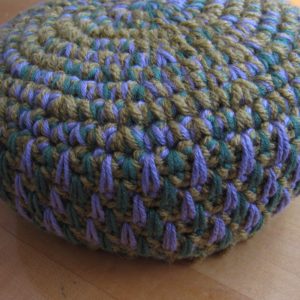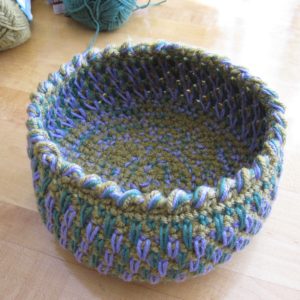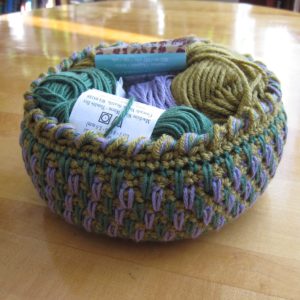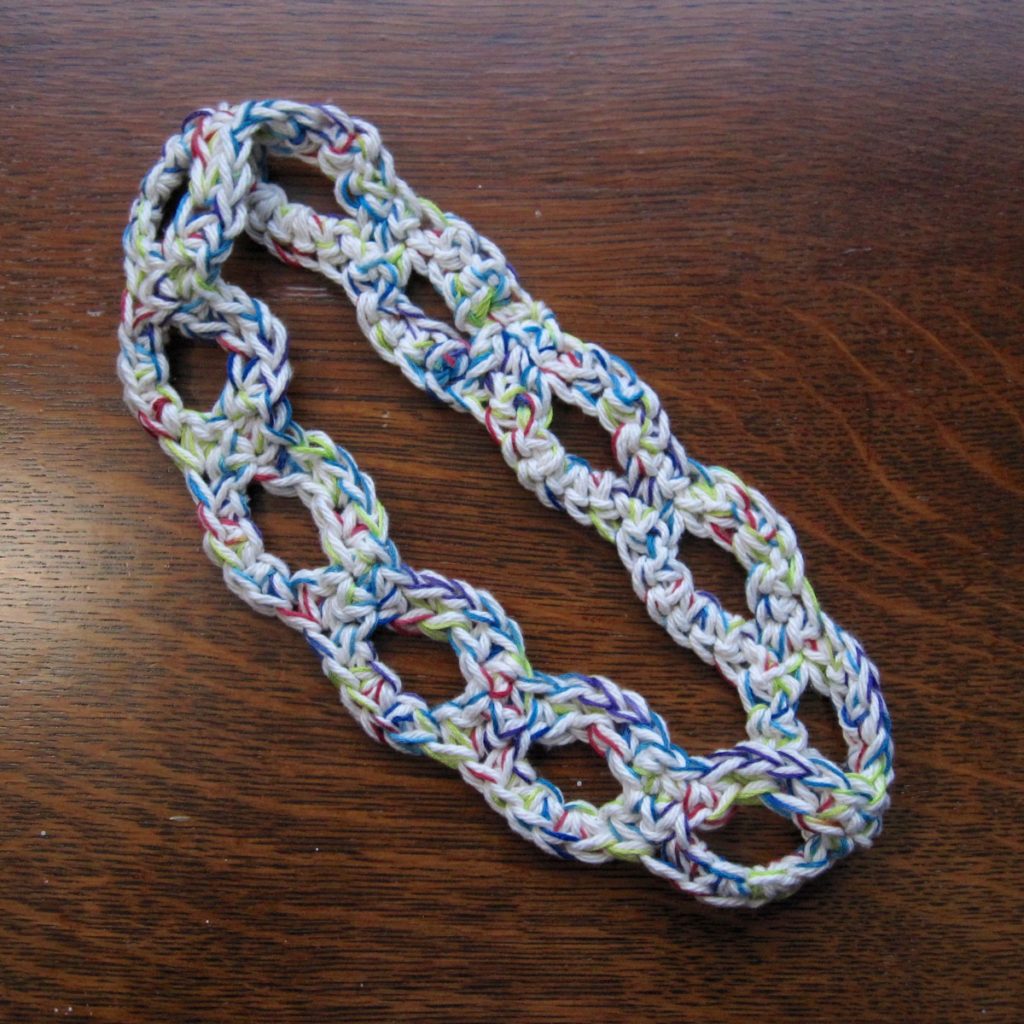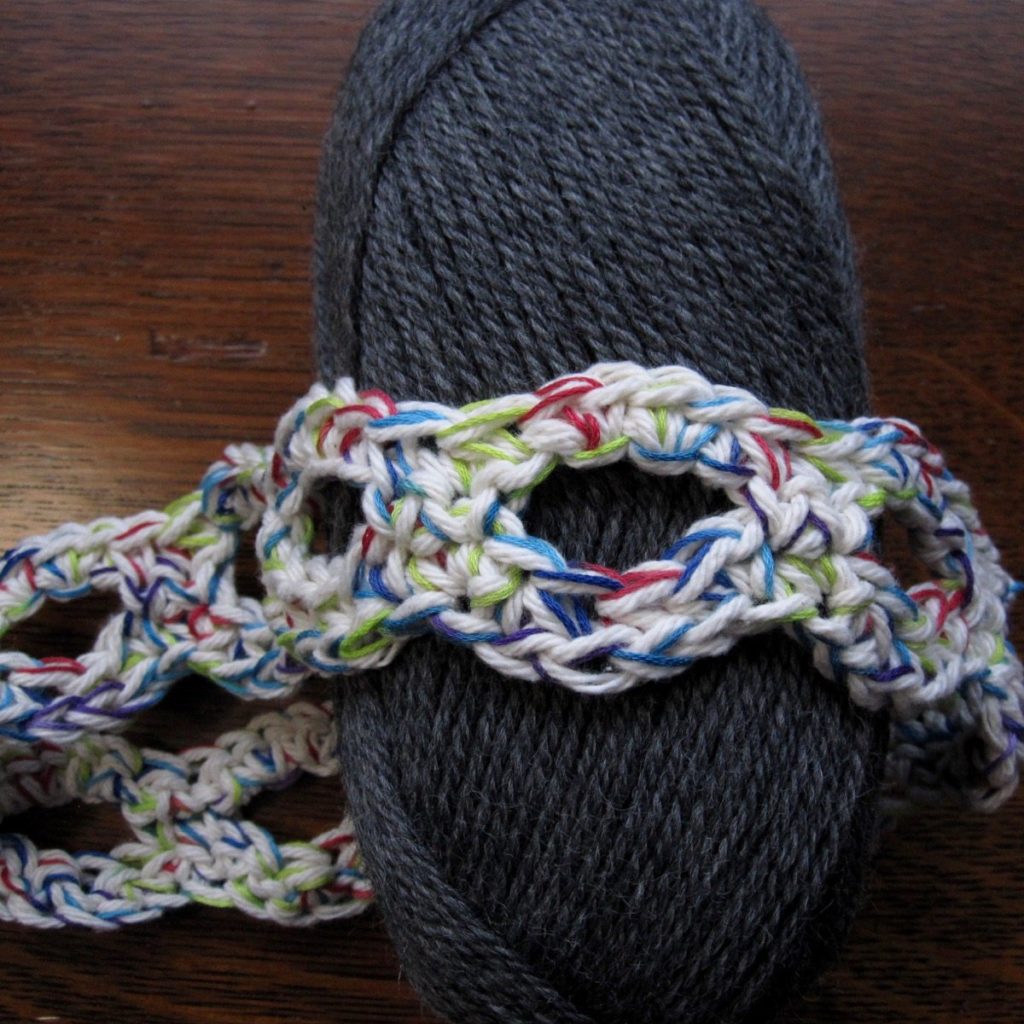Nine more baskets have come off my hook since the last batch I posted about; with the original basket post we’re at 19… and during the writing of this post and its sequel (it was too much for one) I’ve completed another, started one more, and wound three or four balls of yarn for yet more.
What began as an unaccountable impulse has turned into an exploration of edgings, shaping, colors, and surface design that I’m excited to continue. Eventually I hope to make a post or two extracting the patterns for the best of the edgings, for easier reference – but I would want to feel like I am closer to the end of this period of my crochet life before then.
Tapered Spring Basket
So many strands! This was my first – and so far only – five-strand basket. The body of it is straightforward; just single crochet with more decreases on the outside edge than I would have made had I know how they would turn out. Most of the yarns change from beginning to end, though, and there’s a strand of variegated yarn; the combination gives it some extra visual interest.
To be honest I should just give in and call this the Easter basket. The photos are dim; in real life this is bright and candy-colored.
For the top edge I made a round of single crochet in the back loop only, and then a round of alternating single crochet in the previous single crochet, and double crochet in the unused front loop below. It’s simple but finished-looking, and the unused loops between the double crochets set it off from the rest of the basket nicely.
Warty Citrus Sunflower Bowl
O so bright! I haven’t been able to make the rest of this orange yarn work with any other combinations yet, but this one came out great.
On the sides of the basket in two rounds I made some single crochets in the back loop only and then in the next round decreased a single crochet in that stitch with a double crochet in the unused front loop. Those are the warts. They are… subtle. Might have been more worth the effort in a less busy color scheme.
The top edge is a round of what I named “compressed picot”: slip stitch in front loop only; chain 2; slip stitch in back bump of first chain; slip stitch in unused back loop of original stitch. Continue, slip stitching into the front loop of the next stitch. This was the point at which it got the “sunflower” part of its name.
Black and White Heptagon Bowl
When your natural “flat circle” increase rate is seven stitches, it’s easy to make something heptagonal. Stack the increases in every round! I thought a geometric shape would go well with my black and white yarn color scheme.
Once the base was as big as I wanted, I stopped increasing but made half double crochet in each “corner” to continue distinguishing them. For the final round I used single crochet for the most part, but in each corner I made (hdc, dc, hdc) where the second half double crochet is linked to the first behind the double crochet.
“Linked” means instead of yarning over before pulling up a loop, I pulled a loop up through the middle of the previous hdc (i.e. its starting yarn-over). There’s a video and written instructions for linked double crochet on Moogly; half double works the same way but seeing which loop of the previous stitch to insert your hook into might be trickier.
I had to go back and read my stitches to remember how I made this and several other of the baskets… I should really record them more promptly.
Unicorn-Wool Baskets
I allowed myself to buy yarn for no reason (well, we know the reason: baskets) and one of the skeins I came home with was variegated and sherbet-colored. The more I looked at it the more I loved it as it was, so I went back for two more skeins and wound them all together. I just want to eat it.
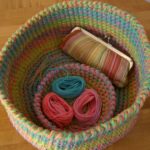
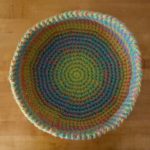 The basket is simply single crochet – why gild the lily? – and the top edge is crab stitch in every previous round’s stitch. When I’d gotten to the point that adding more rows would make the basket disproportionately tall, I still had plenty of yarn left, so I made a mini tray to go along with it.
The basket is simply single crochet – why gild the lily? – and the top edge is crab stitch in every previous round’s stitch. When I’d gotten to the point that adding more rows would make the basket disproportionately tall, I still had plenty of yarn left, so I made a mini tray to go along with it.
The mini tray is just the same: plain old single crochet, and crab stitch at the top.
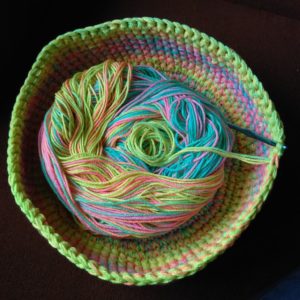 The unicorn-wool basket was also the subject of probably the best in-progress photo I’ve ever taken of anything.
The unicorn-wool basket was also the subject of probably the best in-progress photo I’ve ever taken of anything.
I’m really pleased with this, as simple as it is. I have the ending yarn strands – unicorn haircut sweepings – on a bookshelf in my sewing room, because even they are aesthetically appealing to me.
More in a week!
